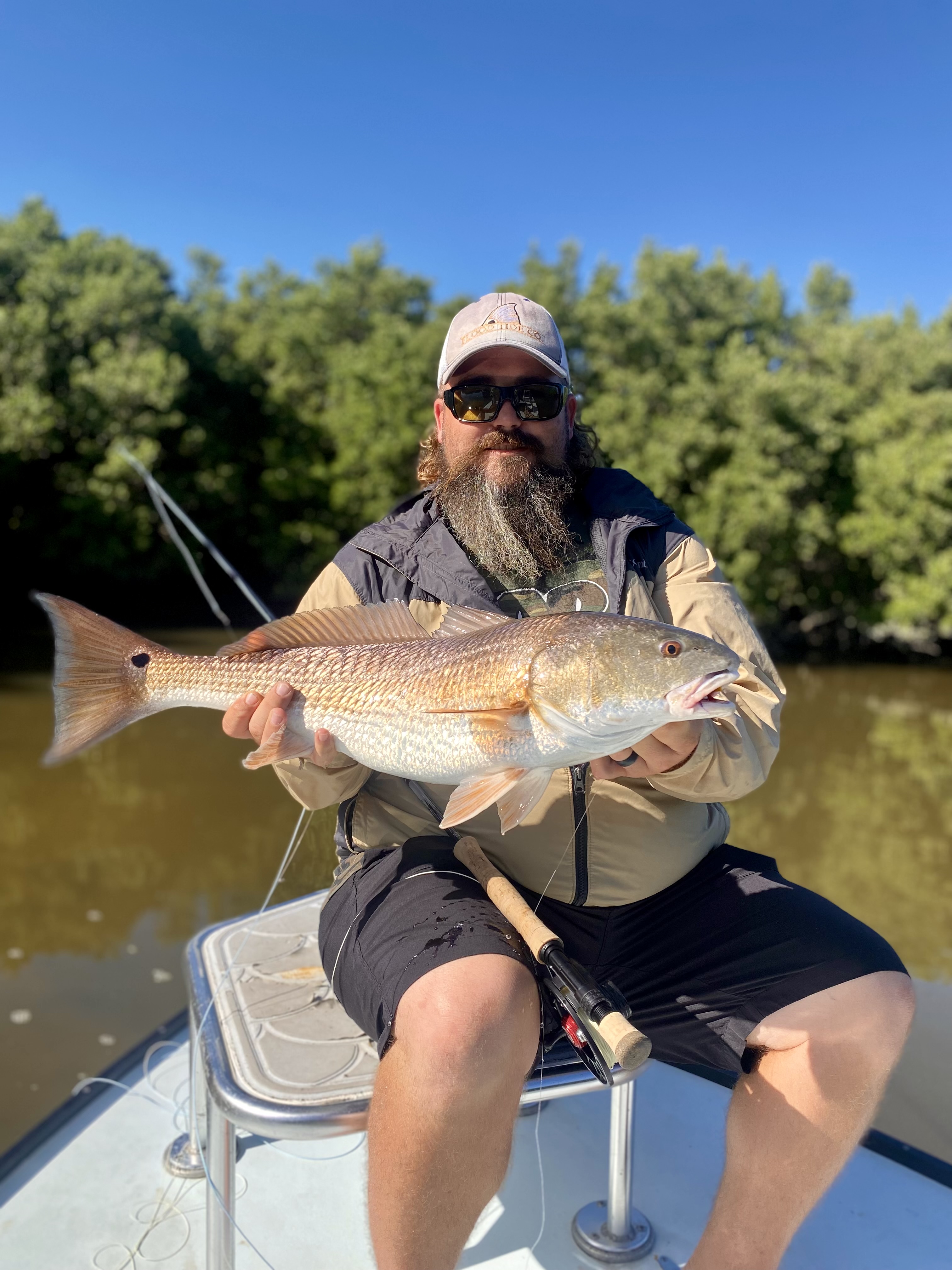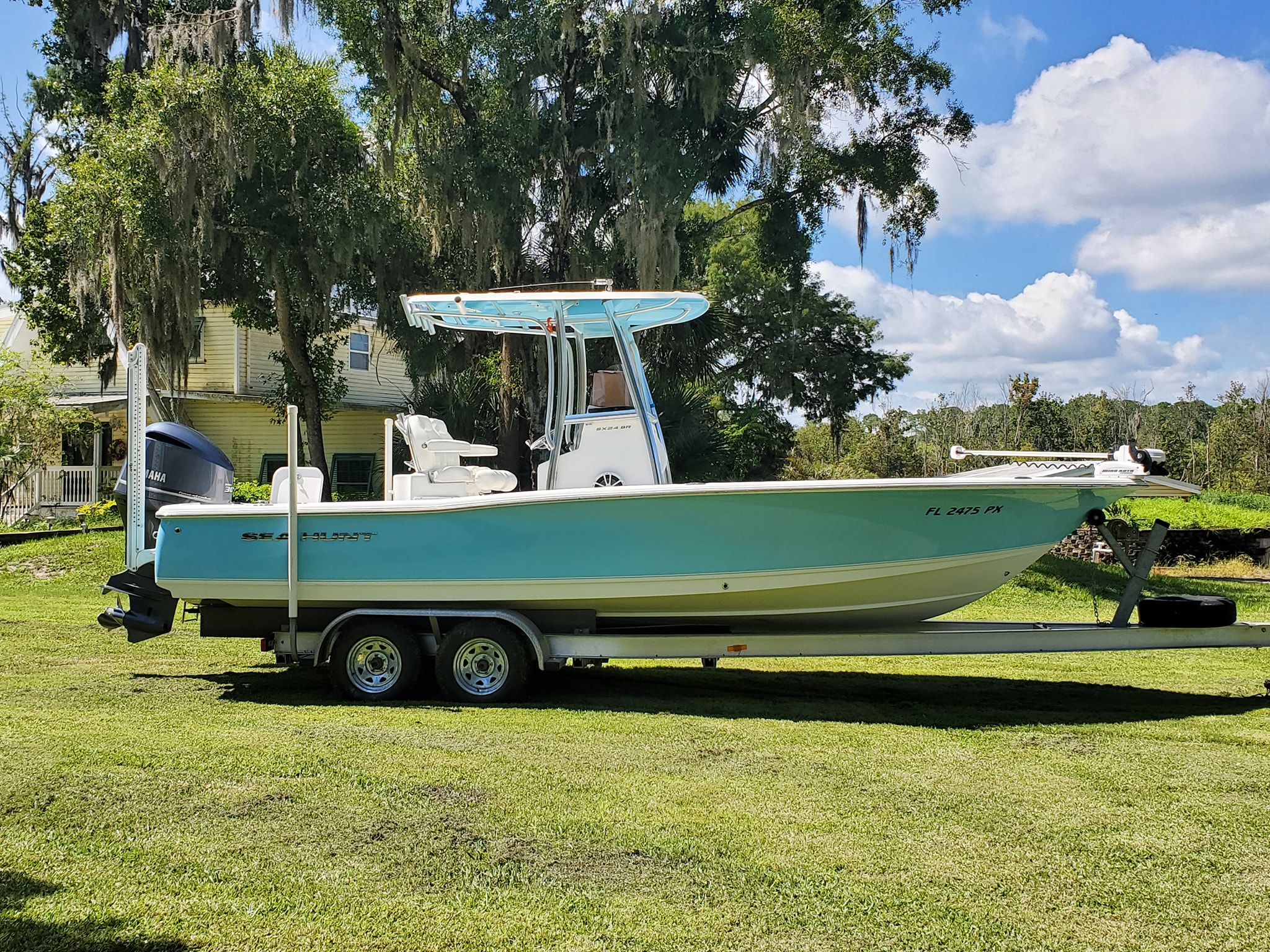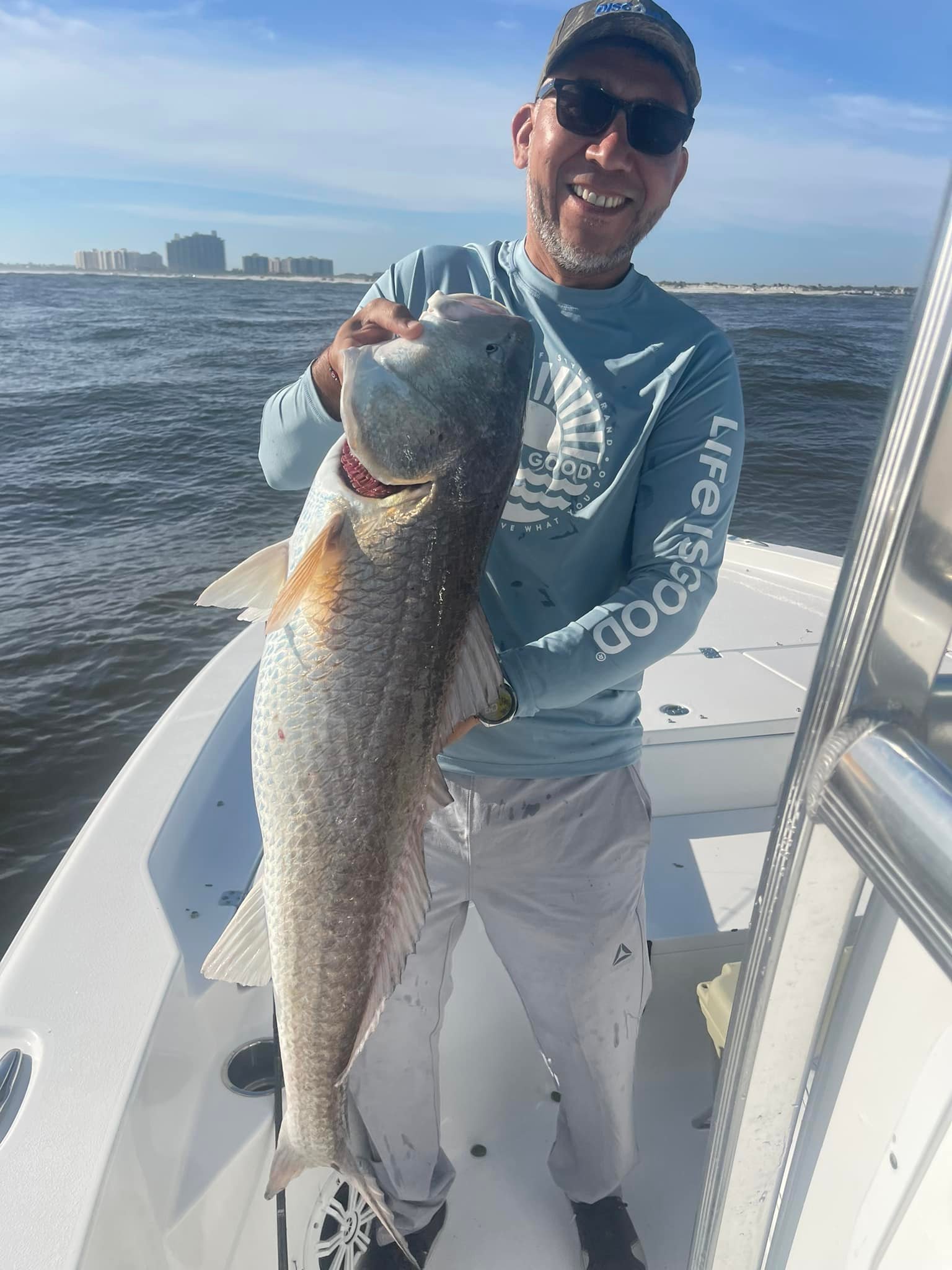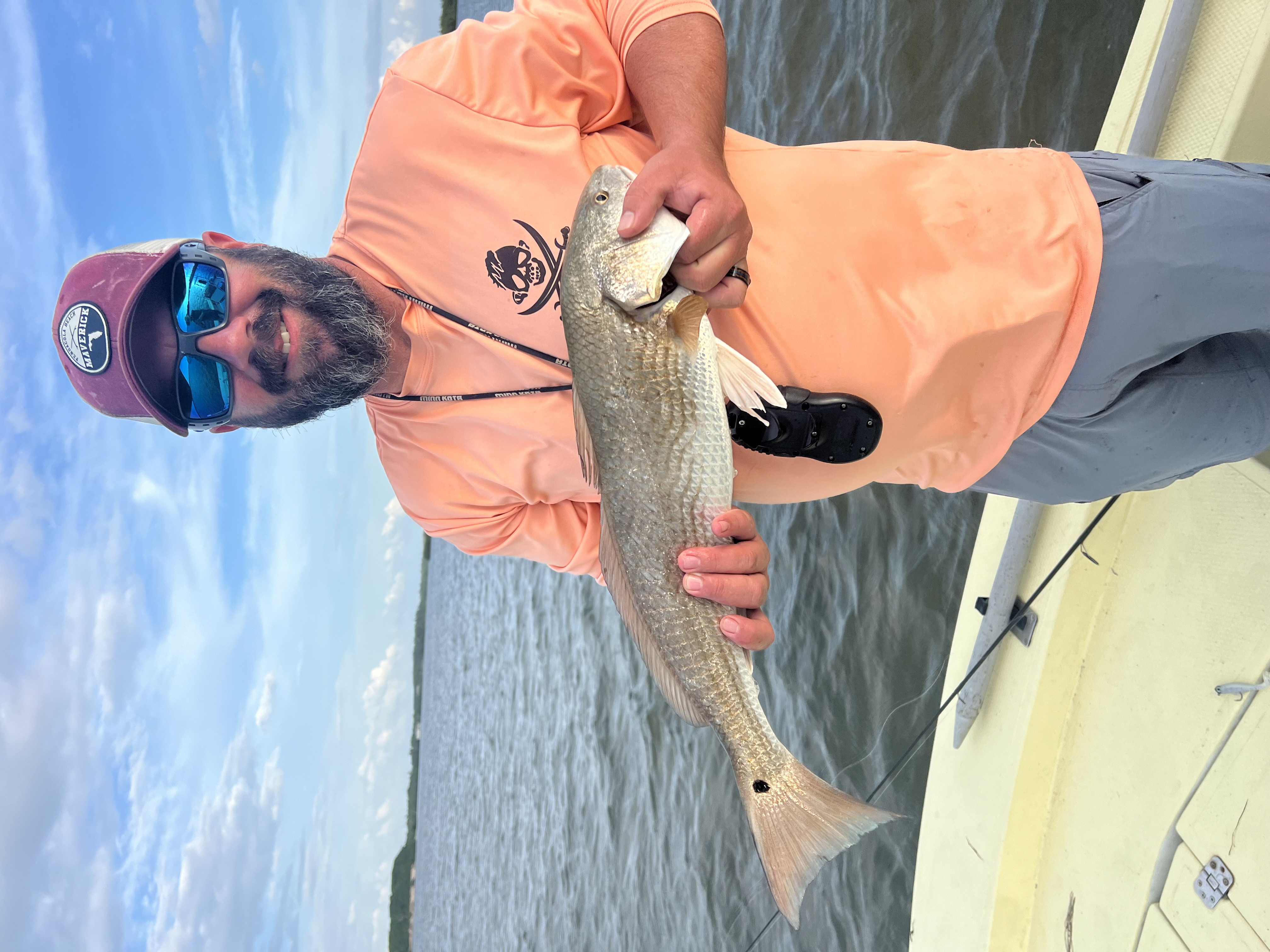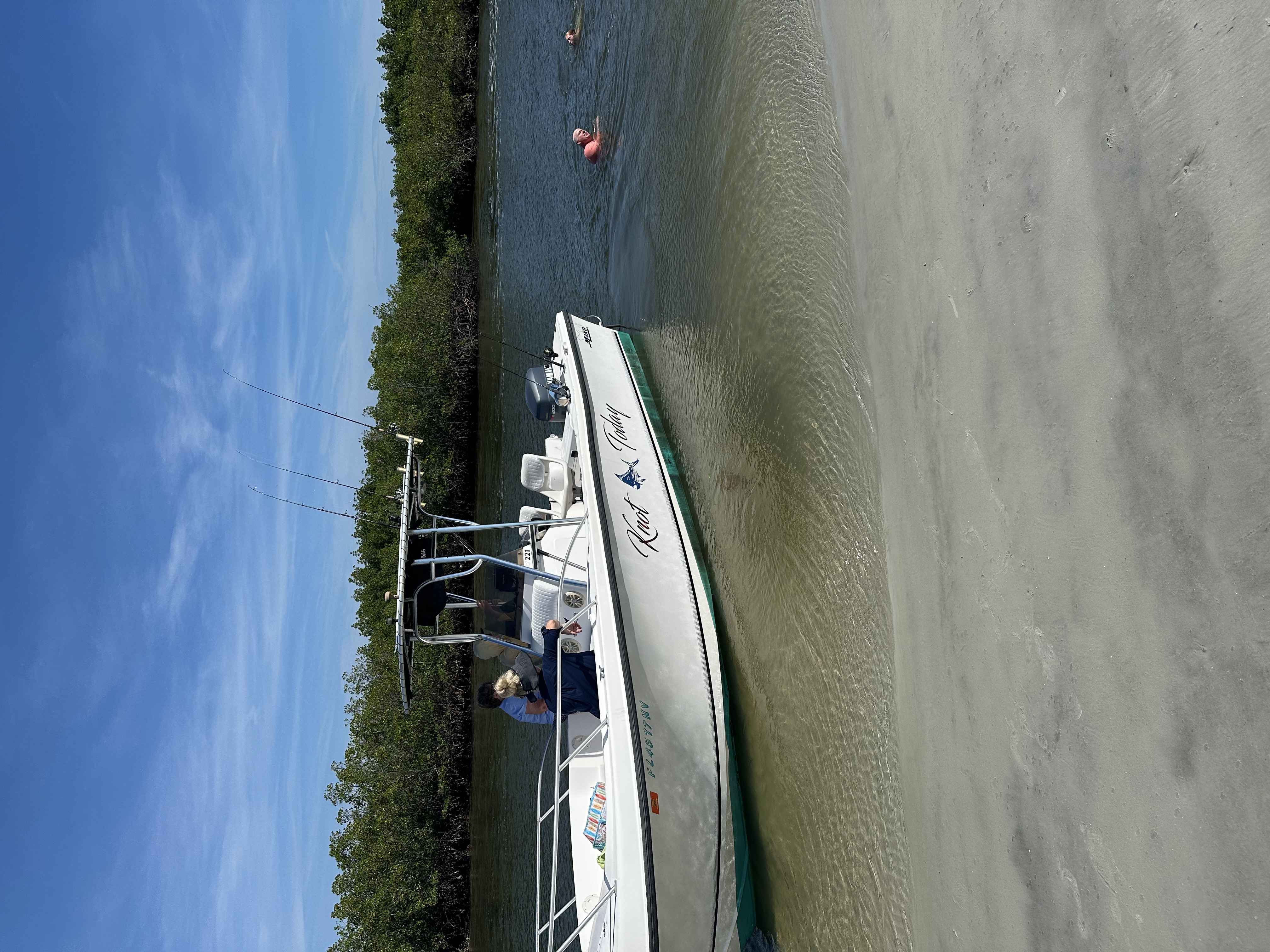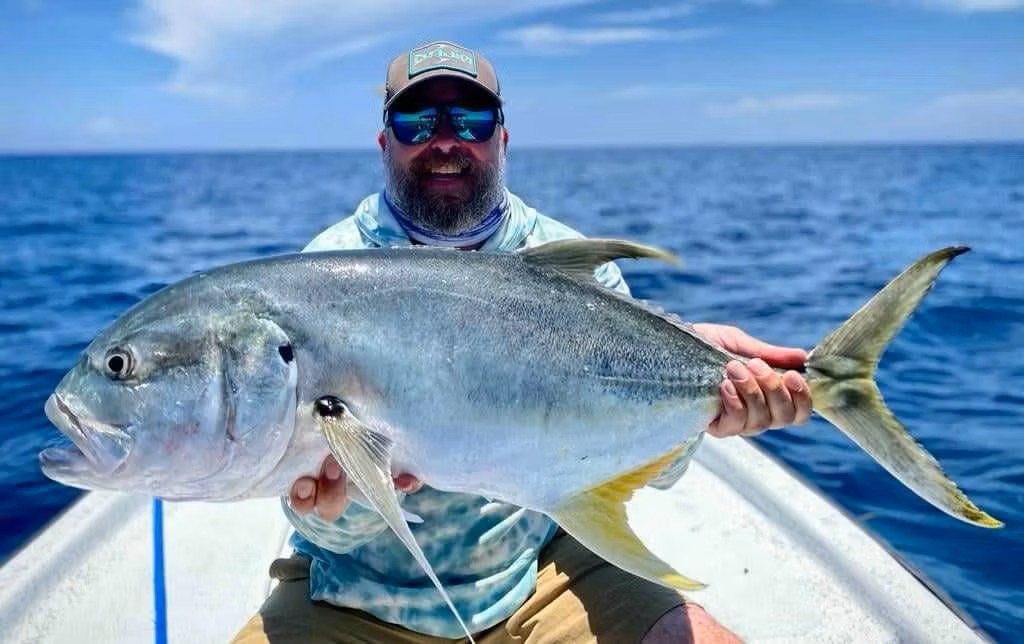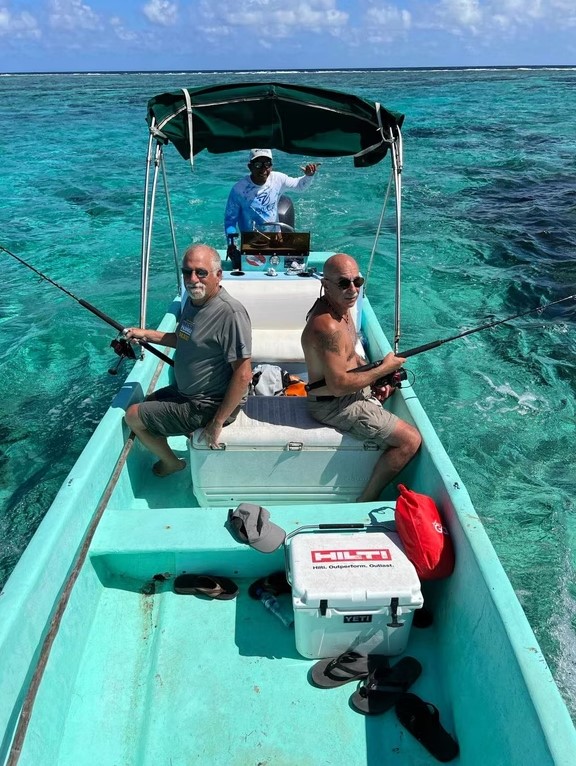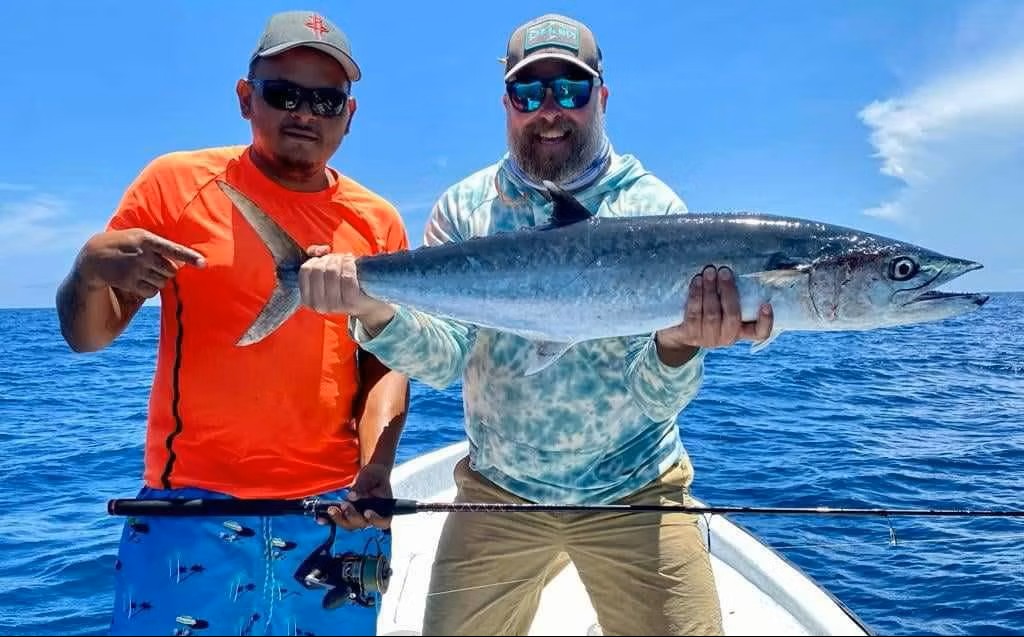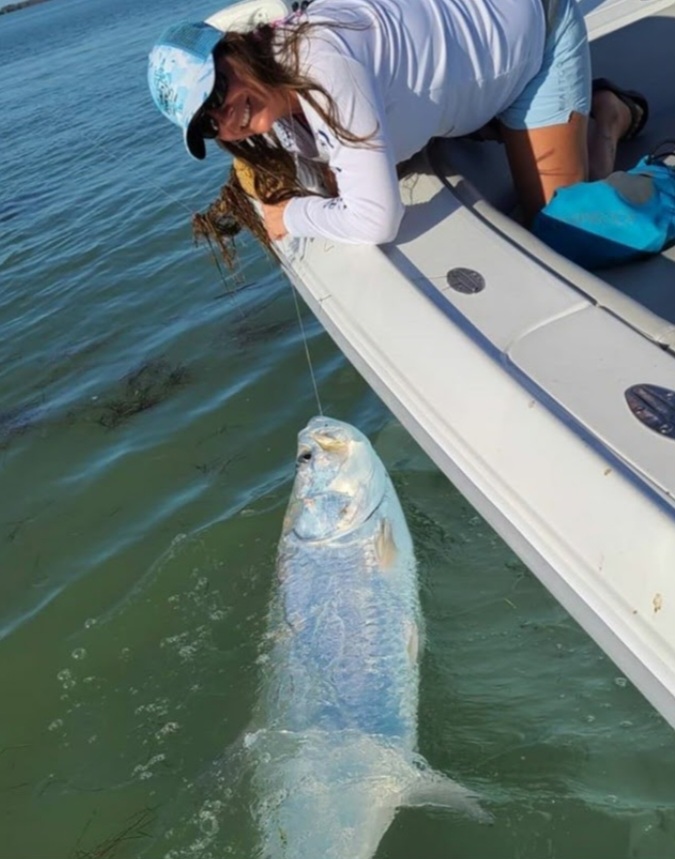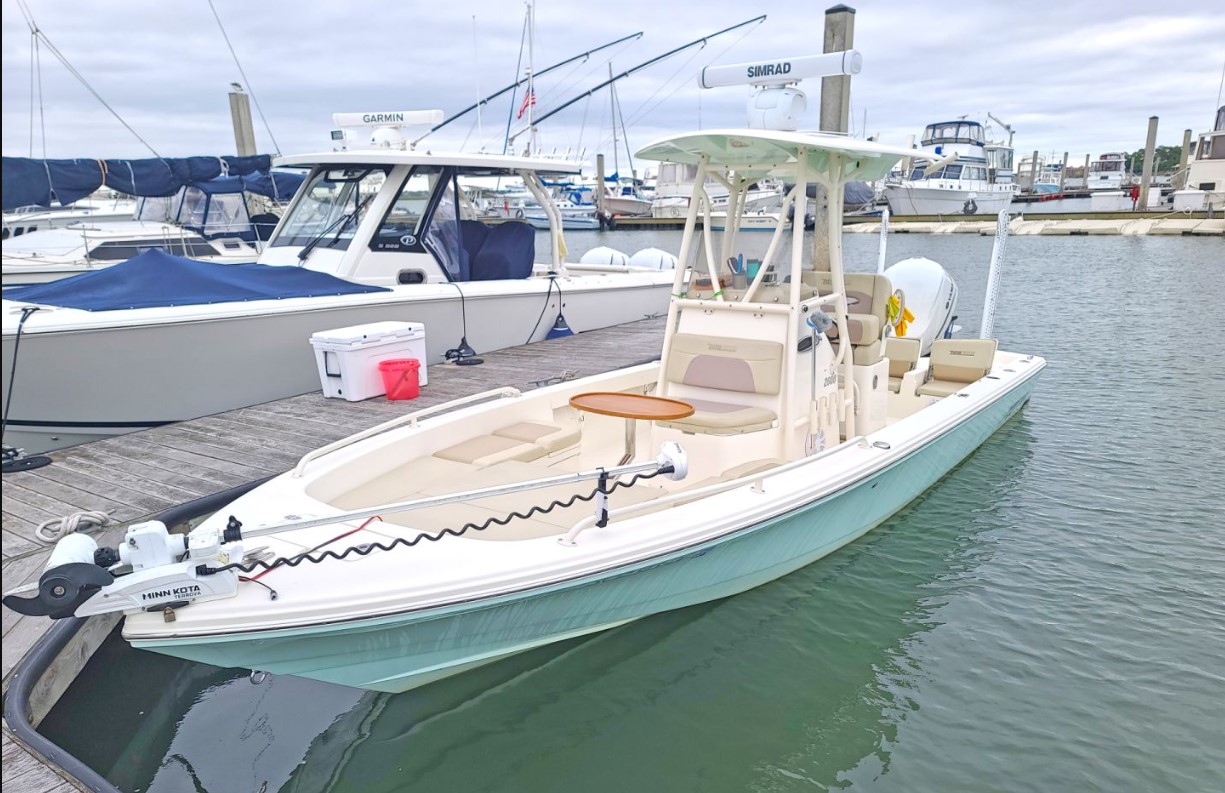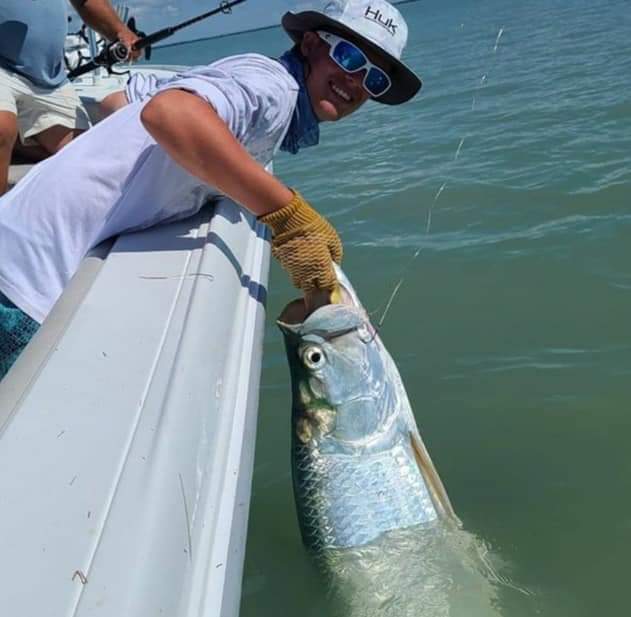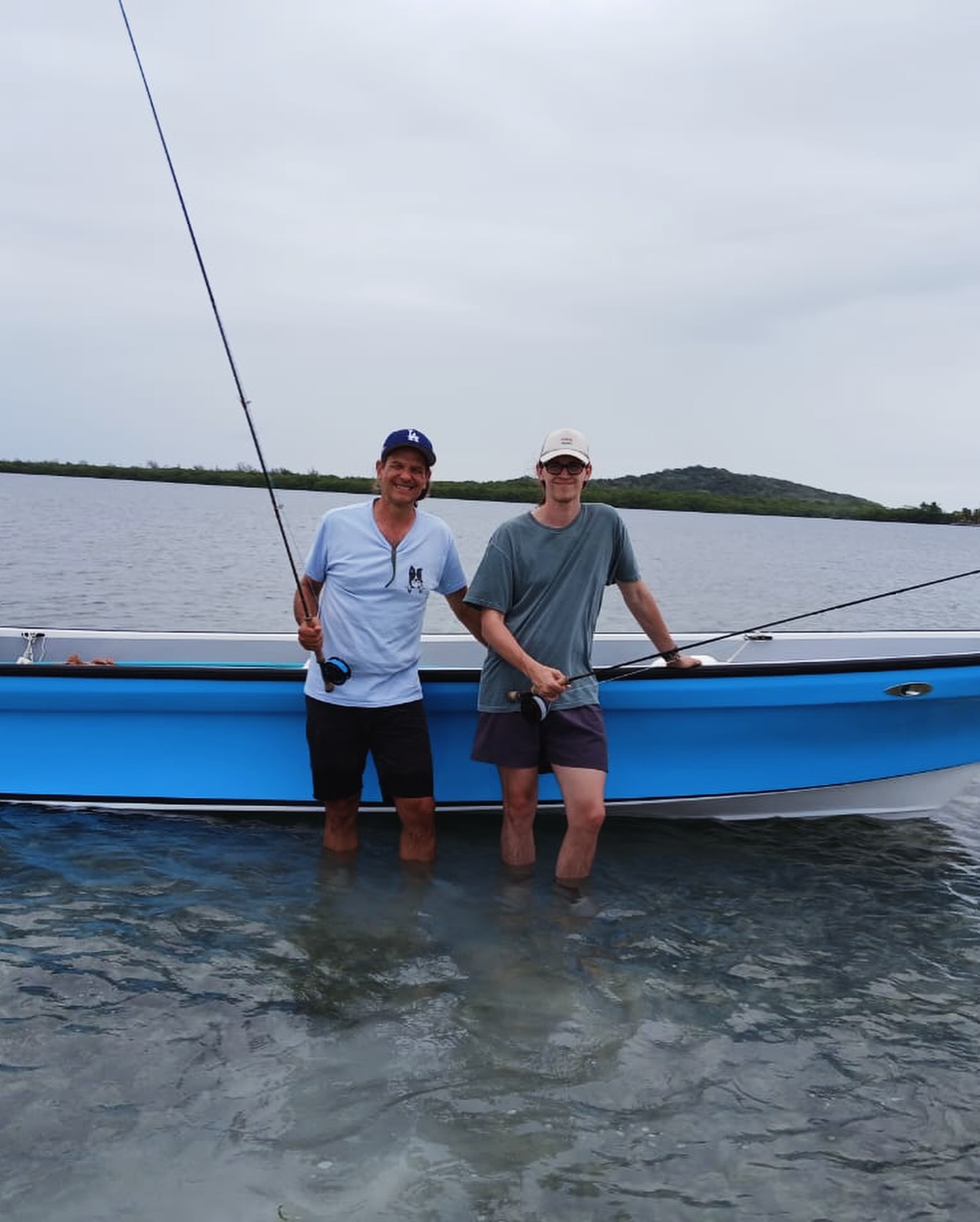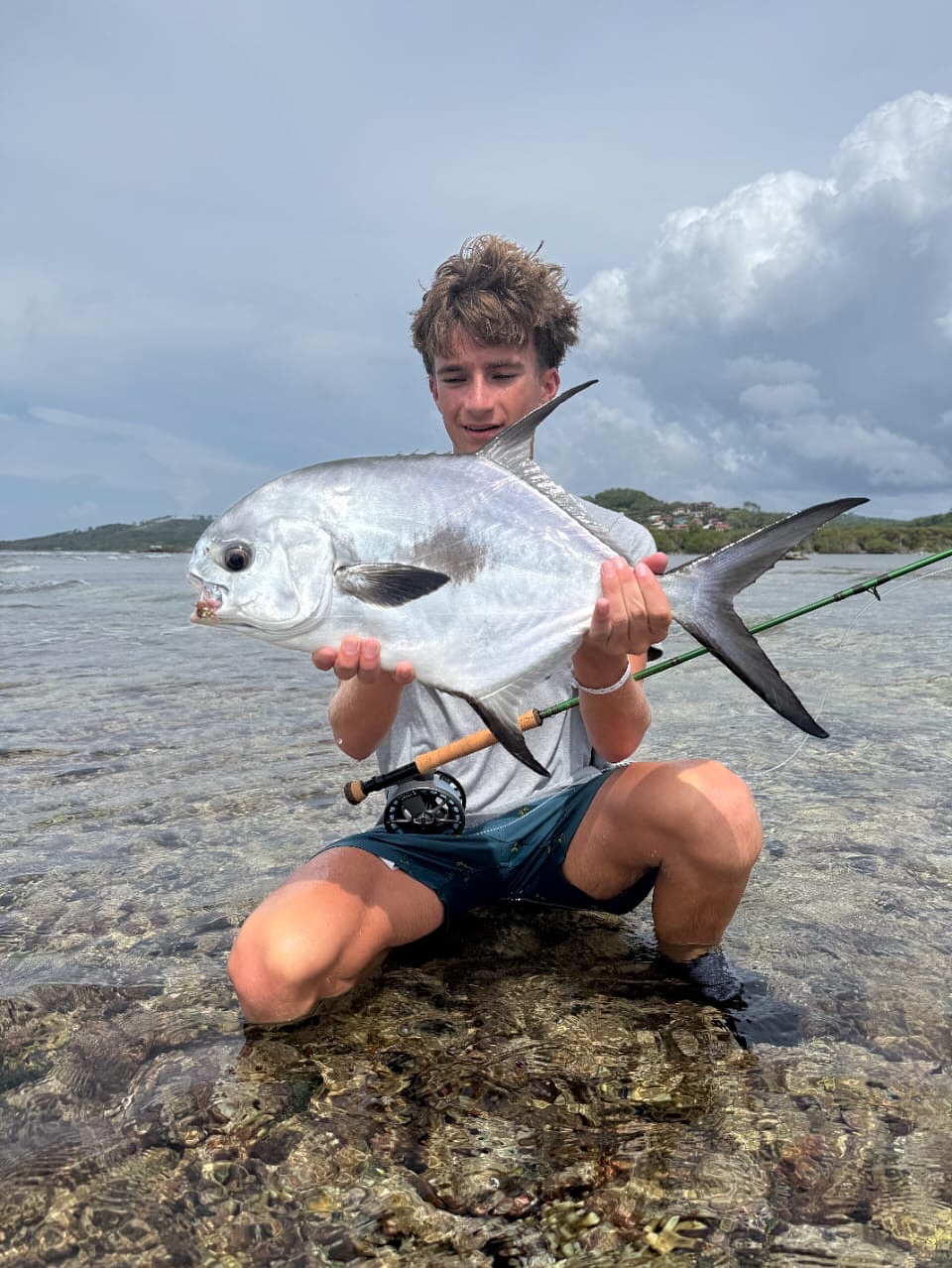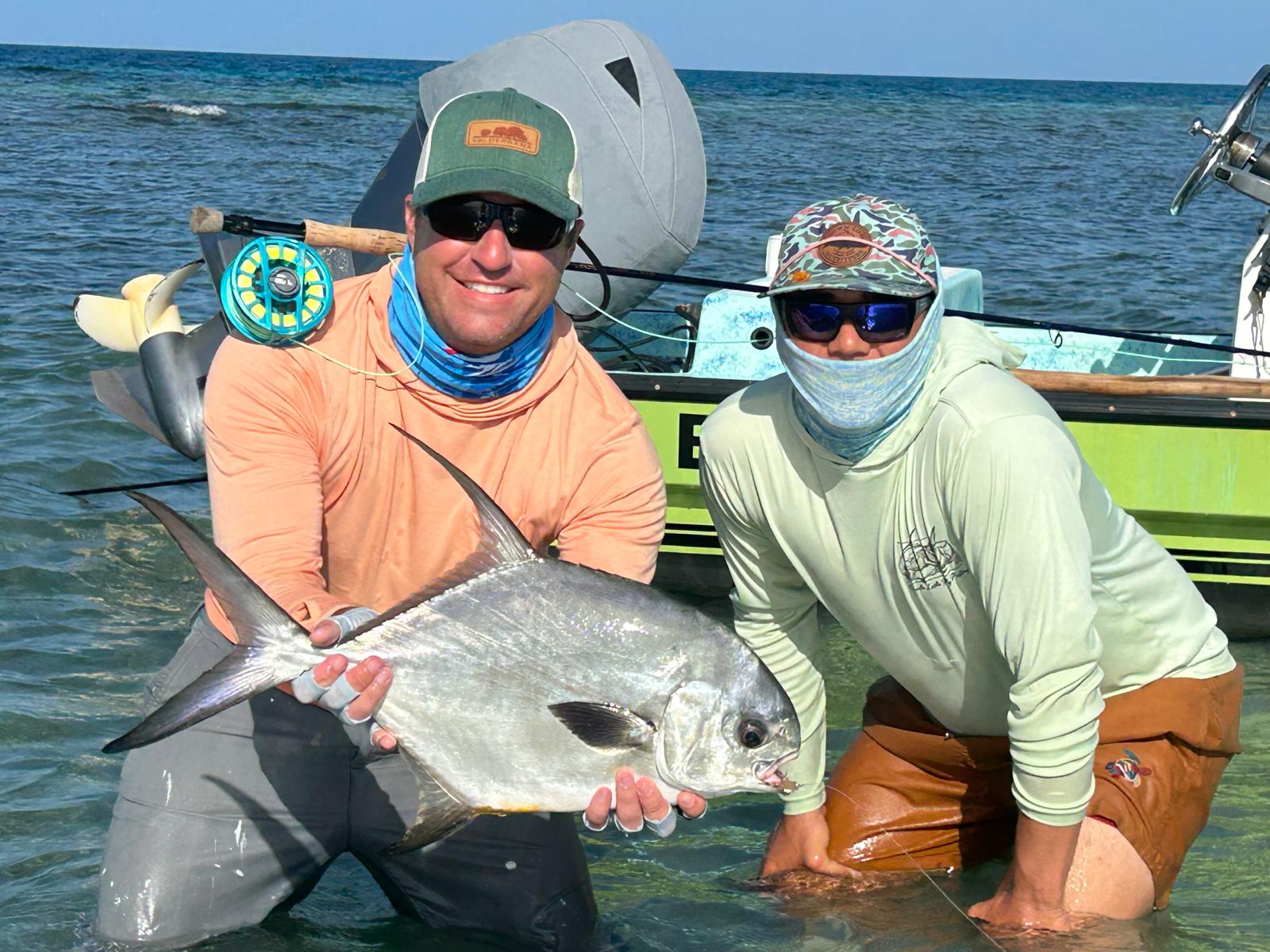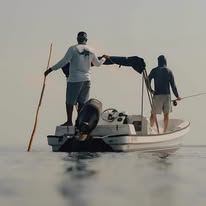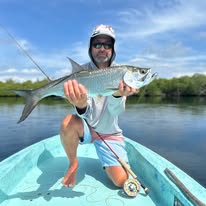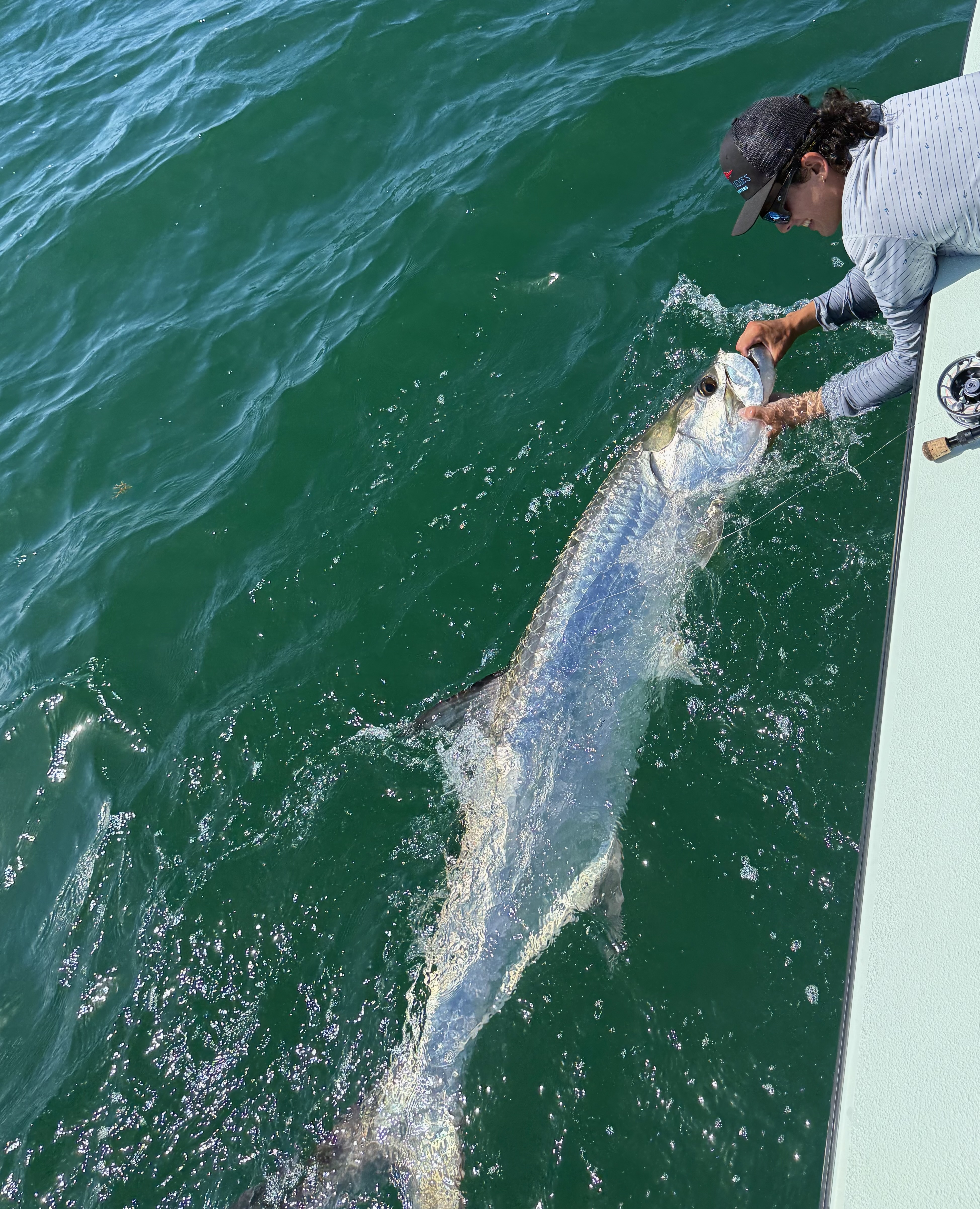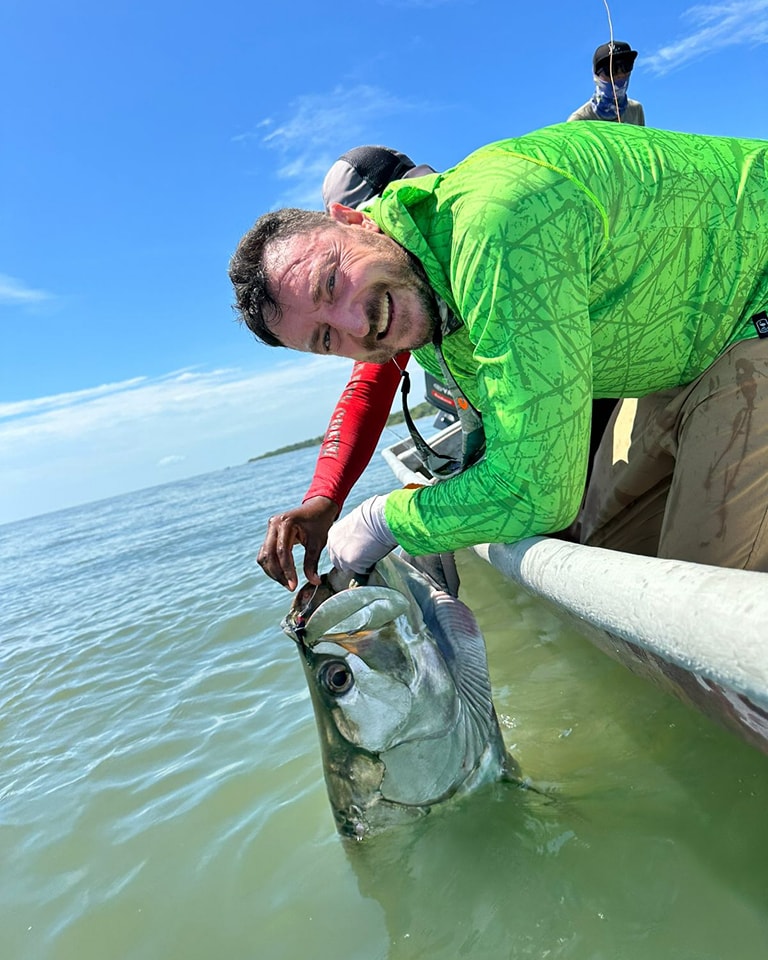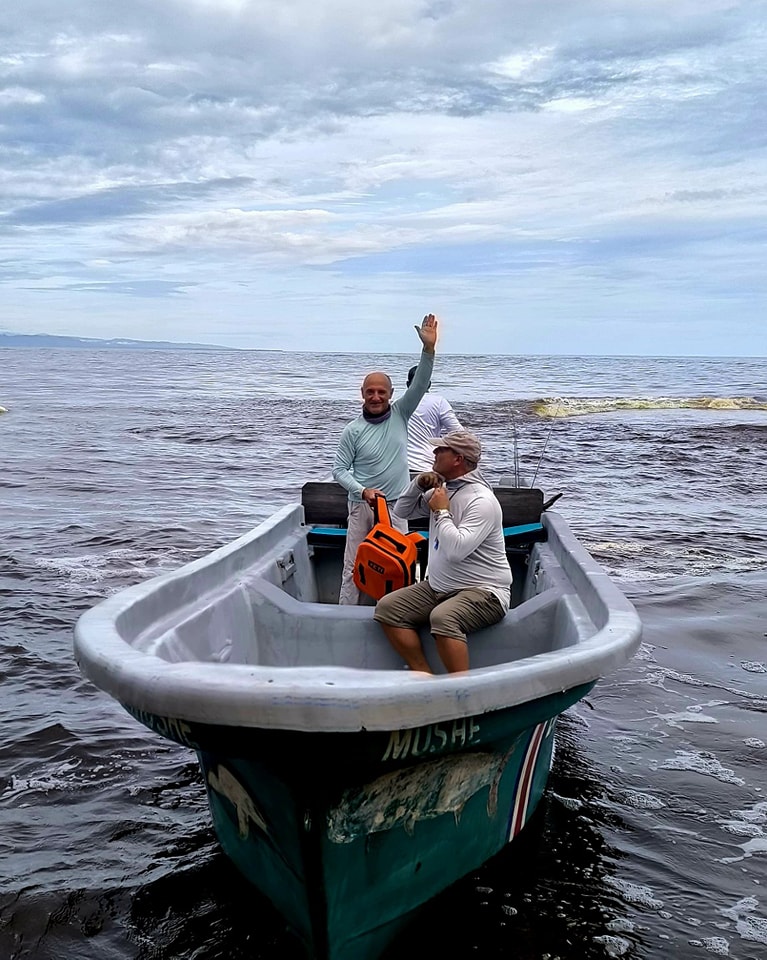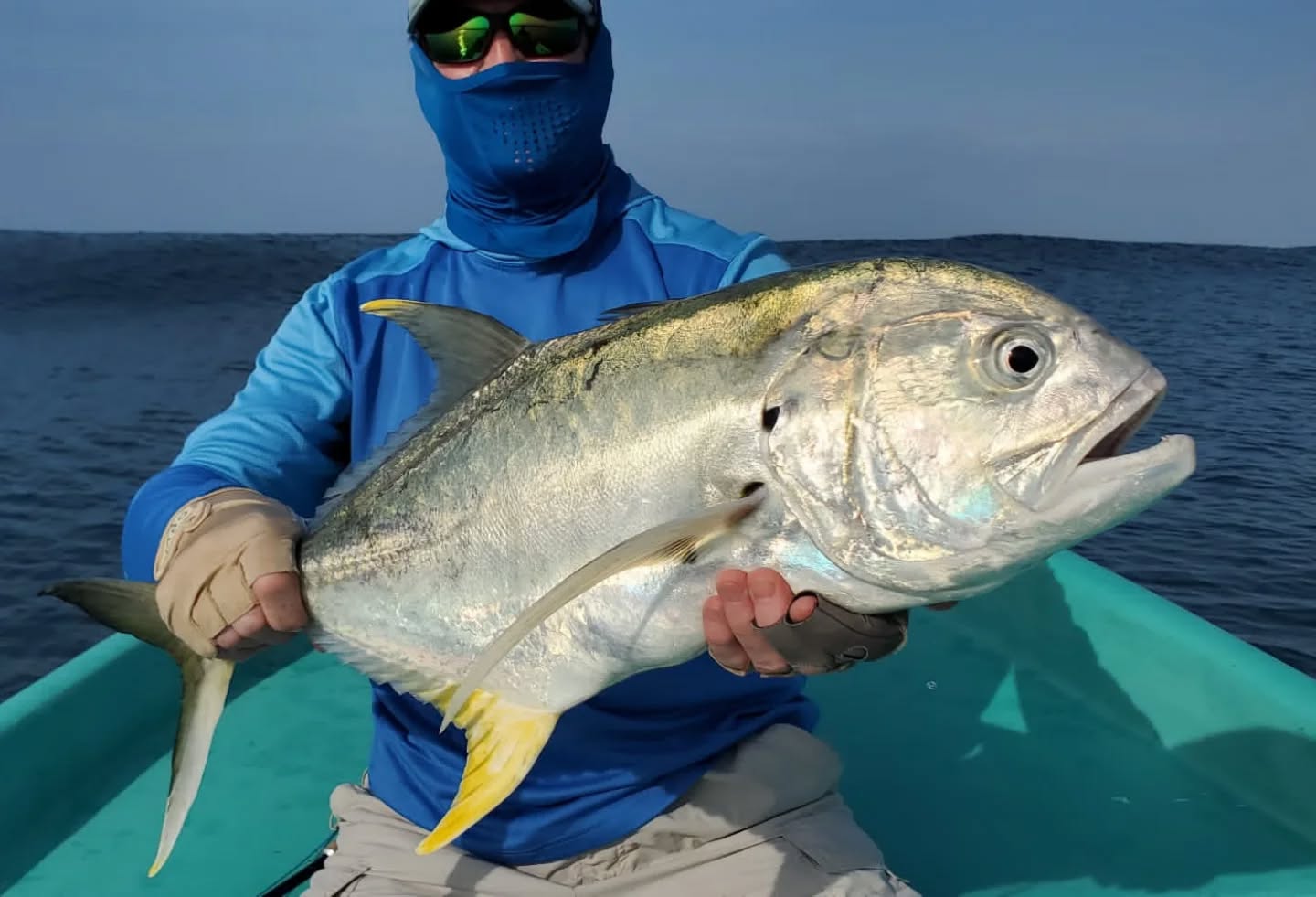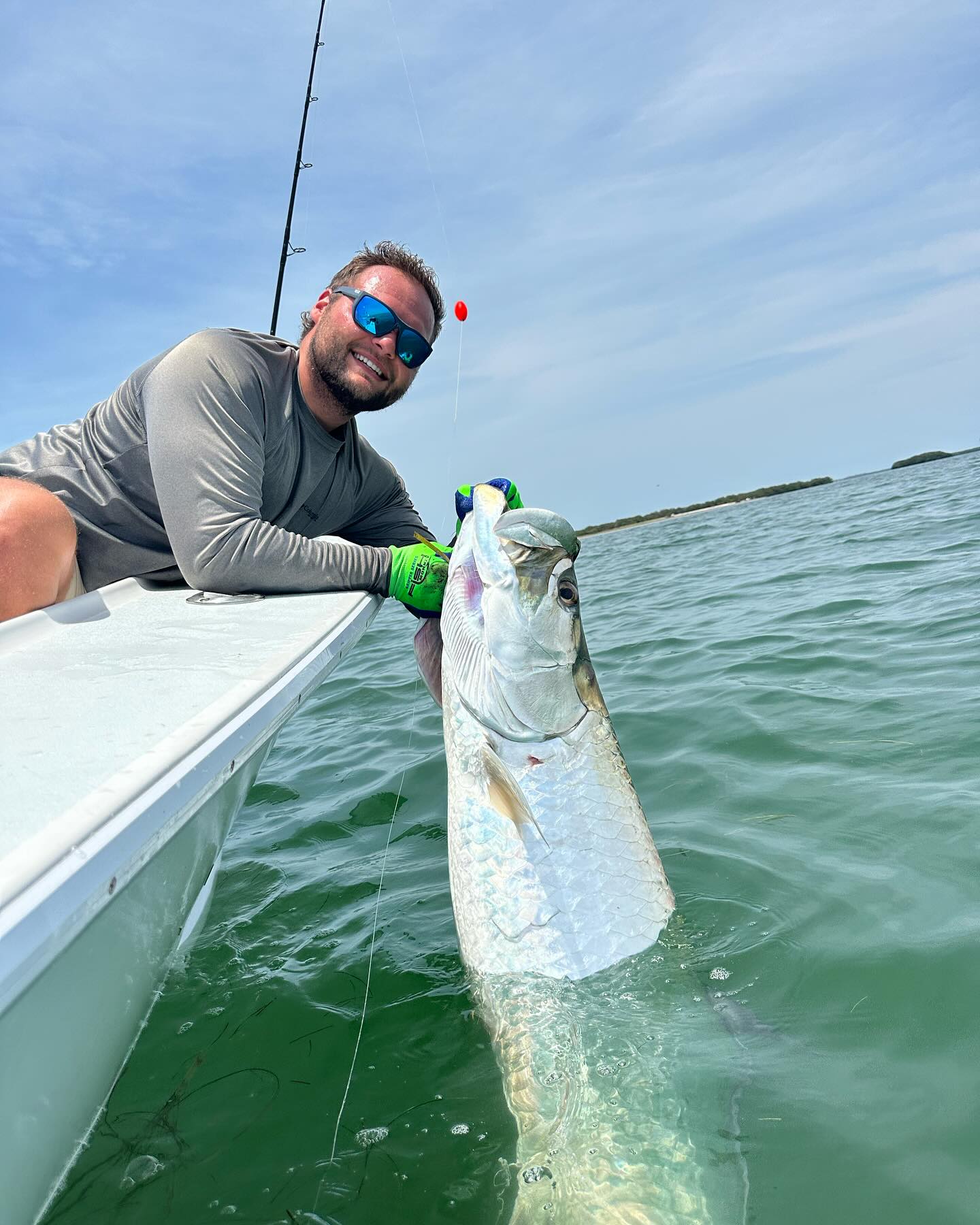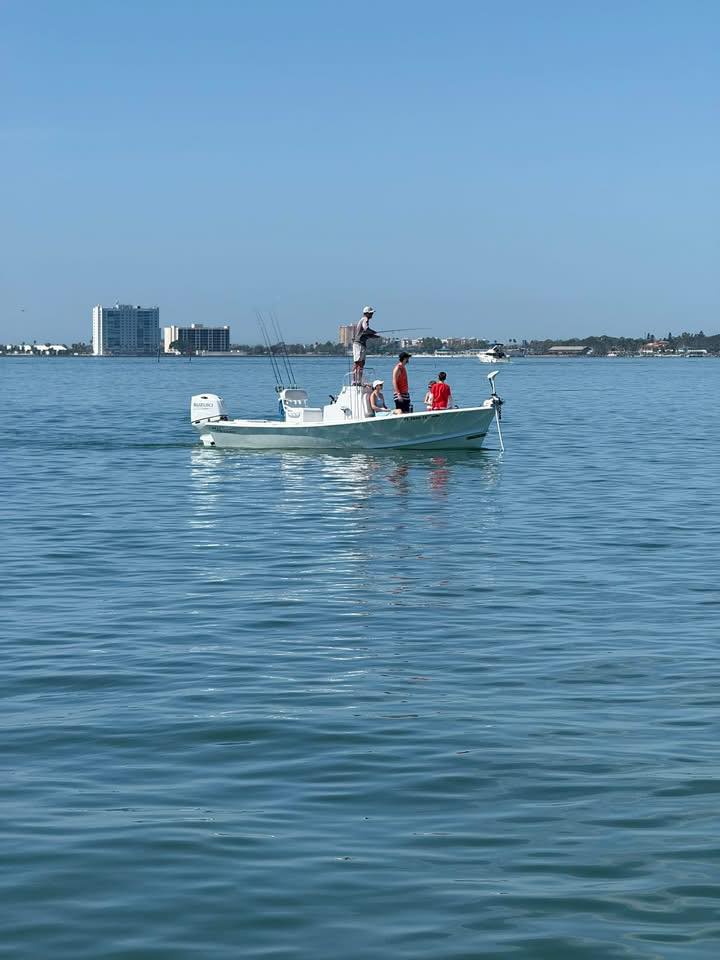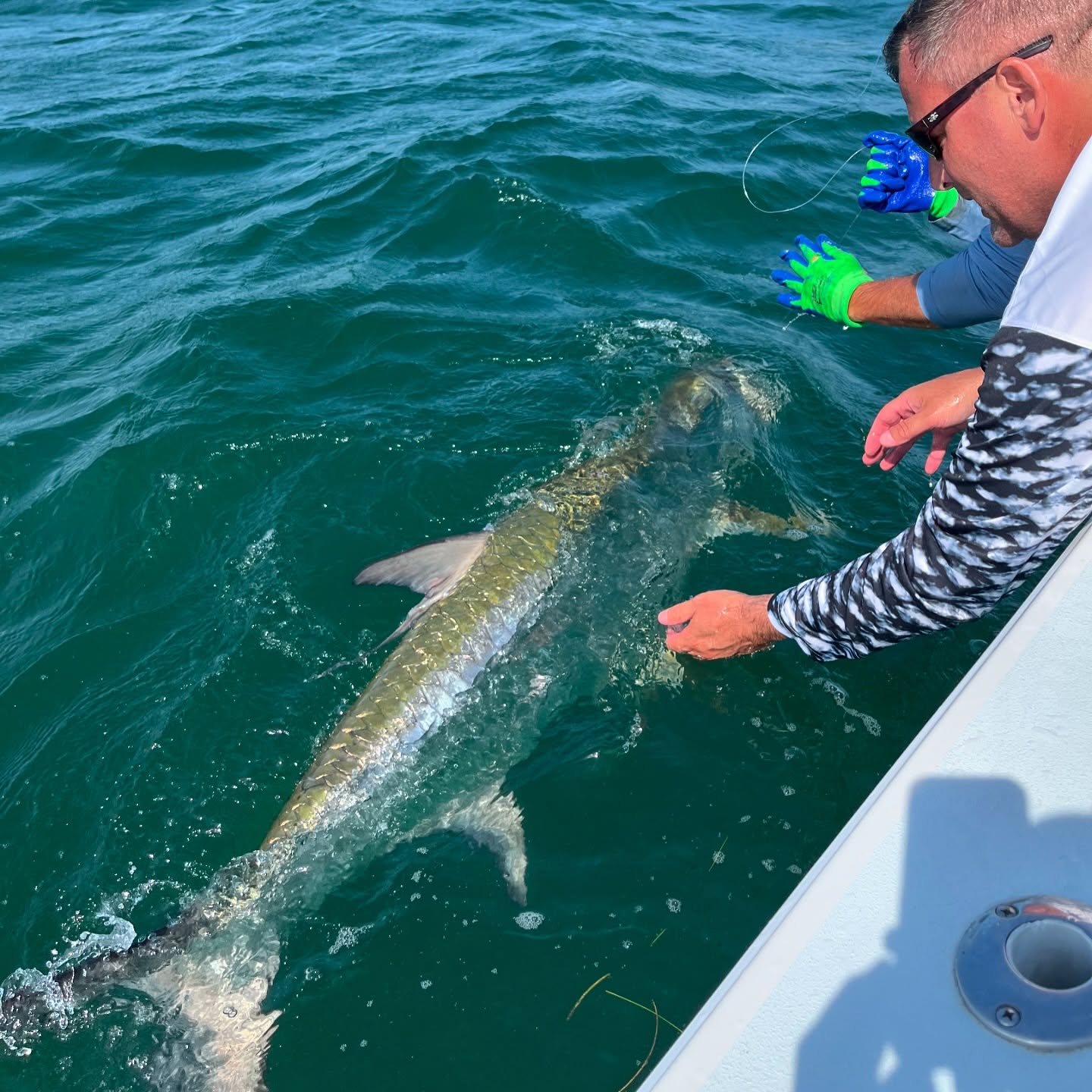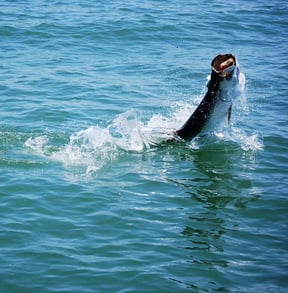Inshore, Flats Fishing in Pineland
Fly Fishing Pineland
Inshore, Flats Fishing in New Smyrna Beach
Inshore Fishing Trip
Inshore, Jetty, River in New Smyrna Beach
Inshore, Bridge And Inlet
Inshore, Nearshore Fishing in Placencia
Spin Fishing
Inshore, River, Flats in Folly Beach
3-6 Hr – Inshore Trip
Inshore, Flats Fishing in Oakridge
Honduras Fly & Light Tackle
Fly Fishing
Inshore, Flats Fishing in San Juan
Sight Fish PR's Clearwater Flats
1 PER ROOM 1 PER BOAT
Inshore Fishing in St. Petersburg
6-8 Hour Tarpon Trip
We started Captain Experiences to make it easy to book fishing and hunting guides around the world. With over 2,000 Damn Good Guides, our platform makes finding and booking a trip seamless. Head here to check out our trips.
What is a Tarpon?
Tarpon, also known as the silver king, are split into two species. Tarpon that live in the Atlantic are called the Megalops atlanticus, and another that lives in the Indian and Pacific Oceans are named the Megalops cyprinoides. These are prehistoric fish that have been around for an estimated 125 million years.
Both species have long bodies with upturned faces and lobed fins. In the water, they’re a dark blue or greenish-black. However, when they are pulled out, they have very shiny silver scales. They are noted for their strength, fickle eating habits, and being highly acrobatic.
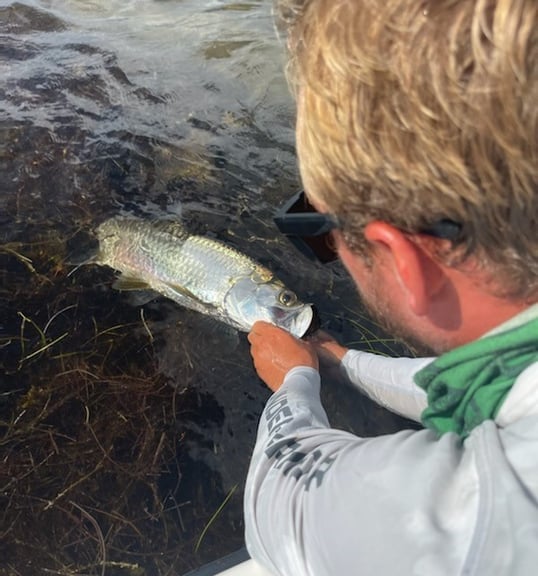
How big do Tarpon get?
Adult tarpon reach maturity at a size of about five to six feet long which is about 100 to 150 pounds. It takes between 13 and 16 years for most tarpon to hit this milestone, but some live up to 50 years in the wild. The average tarpon that is hooked is between 25 and 80 pounds. In captivity, the oldest tarpon ever recorded was a female kept in the John G. Shedd Aquarium in Chicago, Illinois, which lived for 63 years.
What's the biggest Tarpon ever caught?
The IGFA all-tackle world record is 286 pound, 9-ounce tarpon landed on March 20th, 2003 by Max Domecq. It was caught off the coast of Rubane, Guinea-Bissau, Africa.
What is The Best Place to Catch Tarpon?
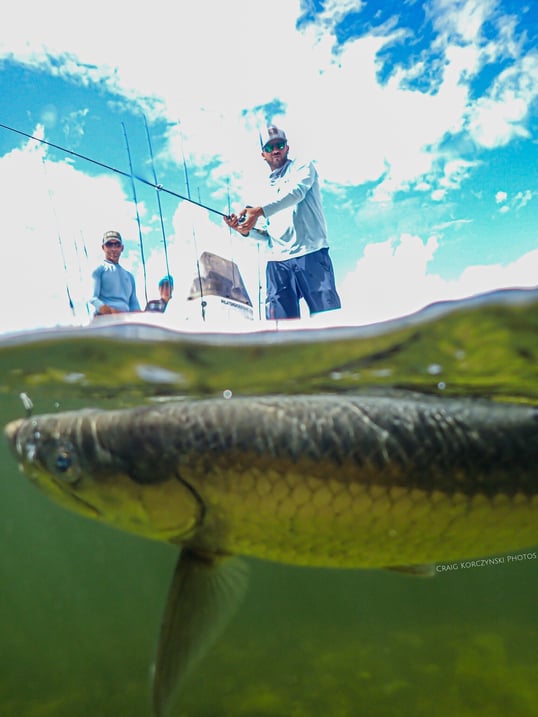
Tarpon fishing with Captain Craig in Jupiter, Florida
Atlantic tarpon can be found from Virginia to Brazil, in the Caribbean, and the Gulf of Mexico. The Indo-Pacific tarpon can be found near southeast Asia, Japan, Tahiti, Australia, and the eastern African coast.
Tarpon can be found feeding in shallow saltwater and brackish environments. These fish spawn offshore where their eggs free-float until they hatch. From there, they venture into nearshore waters and shallow flats. Tarpon migrate throughout the year to find food and chase warm tropical and subtropical waters. Below are the most popular places to catch a trophy tarpon:
Florida Keys, Florida - The Florida Keys are widely regarded as one of the best places in the world to catch tarpon, where they are known to patrol the flats, canals, and bays. The waters around Key West, Marathon, and Islamorada are particularly productive.
Boca Grande, Florida - Boca Grande Pass is home to one of the largest tarpon migrations in the world. Every spring, thousands of tarpon pass through the pass, providing an incredible fishing experience. There are tons of skilled fishing guides in Boca Grande to put you on the silver king.
Puerto Rico - The waters around Puerto Rico are home to some of the largest tarpon in the world. The best fishing is usually in the summer months. We have several awesome guides in Puerto Rico, from San Juan to Carolina.
Costa Rica - The Tarpon Coast in Costa Rica is known for its huge tarpon. Anglers can expect to catch tarpon weighing over 100 pounds, especially when they head out on a Costa Rica fishing charter with captains that know exactly how to hook into these bucket list fish.
Belize - The flats and mangrove-lined lagoons of Belize are home to a large population of tarpon. The best time to fish is from April to September.
Panama - The waters off the coast of Panama are home to some of the biggest tarpon in the world. The best time to fish is from May to September.
When is The Best Time to Catch Tarpon?
Tarpon feed at dawn and dusk, making the best time to fish for them early in the morning and late in the afternoon.
Within the United States, they can be found on the Gulf Coast from May to July and April through June on the Atlantic Coast. Outside of the country in Mexico and Costa Rica, the tarpon fishing is great throughout the year.
How To Catch Tarpon?
The best place to target tarpon is when they are more visible in shallow waters like the flats. These large predators can easily be targeted in shallow water by sight casting. Anglers fishing for tarpon on the flats have two options for sight casting. The first option is to use traditional tackle while throwing artificial or live bait. For anglers that want the ultimate challenge, fly fishing for tarpon is a rewarding experience. For natural bait, use mullet, pinfish, crabs, or shrimp, but you can also cast artificial lures. Tarpon are easily spooked by loud noises, such as loud boat motors, so using an electric motor or poling is recommended.
If you can, hiring an experienced guide can be extremely helpful. They will be able to assist you in both catching and landing a beautiful tarpon. A guide will be able to advise you on when to apply pressure or relax the line and whether to chase the fish or hold the position.
“Bowing to the king” is no joke, as tarpon are tenacious fighters. When they jump, it is vital to quickly lower the tip of your rod. This will help to keep your line from breaking against the tarpon.
Are Tarpon good to eat?
Tarpon are well known not to be good to eat. They have many small bones that make the fish hard to clean and have smelly and distasteful meat.
Joey Butrus
Updated on July 31, 2023

July 1, 2024

November 15, 2023
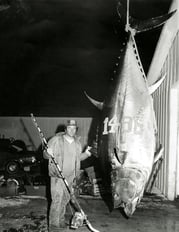
June 3, 2021

May 13, 2024

June 28, 2023
Related Articles
April 15, 2022
June 26, 2023
Featured Locations
- Fishing Charters Near Me
- Austin Fishing Guides
- Biloxi Fishing Charters
- Bradenton Fishing Charters
- Cabo San Lucas Fishing Charters
- Cancun Fishing Charters
- Cape Coral Fishing Charters
- Charleston Fishing Charters
- Clearwater Fishing Charters
- Corpus Christi Fishing Charters
- Crystal River Fishing Charters
- Dauphin Island Fishing Charters
- Daytona Beach Fishing Charters
- Destin Fishing Charters
- Fort Lauderdale Fishing Charters
- Fort Myers Fishing Charters
- Fort Walton Beach Fishing Charters
- Galveston Fishing Charters
- Gulf Shores Fishing Charters
- Hatteras Fishing Charters
- Hilton Head Fishing Charters
- Islamorada Fishing Charters
- Jacksonville Fishing Charters
- Jupiter Fishing Charters
- Key Largo Fishing Charters
- Key West Fishing Charters
- Kona Fishing Charters
- Lakeside Marblehead Fishing Charters
- Marathon Fishing Charters
- Marco Island Fishing Charters
- Miami Fishing Charters
- Montauk Fishing Charters
- Morehead City Fishing Charters
- Naples Fishing Charters
- New Orleans Fishing Charters
- New Smyrna Beach Fishing Charters
- Ocean City Fishing Charters
- Orange Beach Fishing Charters
- Panama City Beach Fishing Charters
- Pensacola Fishing Charters
- Pompano Beach Fishing Charters
- Port Aransas Fishing Charters
- Port Orange Fishing Charters
- Rockport Fishing Charters
- San Diego Fishing Charters
- San Juan Fishing Charters
- Sarasota Fishing Charters
- South Padre Island Fishing Charters
- St. Augustine Fishing Charters
- St. Petersburg Fishing Charters
- Tampa Fishing Charters
- Tarpon Springs Fishing Charters
- Venice Fishing Charters
- Virginia Beach Fishing Charters
- West Palm Beach Fishing Charters
- Wilmington Fishing Charters
- Wrightsville Beach Fishing Charters


